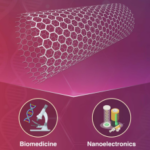Known for its strength, low weight and compatibility with the human body, titanium plays an increasingly important part in modern medicine. Its use spans everything from implants and surgical tools to advanced medical devices. Here, we’ll explore how this metal has become such a mainstay in healthcare – and why it continues to gain traction across so many specialties.
Historical Context & Industry Adoption
Titanium is critical in modern medical implants due to its unique properties, but its medical use only began in the mid-20th century. Researchers in the 1950s first explored titanium for surgical implants after discovering the metal could bond directly with bone (a phenomenon later termed osseointegration1).
An early landmark case in 1965 saw a patient receive titanium dental implants that lasted an extraordinary 40 years in function 1. This unprecedented longevity and biocompatibility demonstrated early on that titanium could safely remain in the body for decades, setting the stage for its widespread adoption in healthcare.
Benefits of Titanium for Medical Use
Titanium’s popularity in medicine is driven by several key benefits:
Biocompatibility and Longevity: Titanium is biologically inert and resists corrosion in body fluids, so implants rarely provoke immune reactions. As a result, modern titanium implants show extremely high long-term success rates – for example, dental implant studies report about a 97% success rate at 10 years and 75% at 20 years 2, far outperforming older materials. Once a titanium implant integrates with bone, it can remain functional for decades without being rejected.
Strength-to-Weight Advantage: Titanium is as strong as stainless steel but significantly lighter. Its high tensile strength and low weight make it ideal for load-bearing implants like hip or knee replacements. Unlike heavier metals, titanium does not overly stress surrounding bone. It also has an elastic modulus closer to bone, which means it can flex slightly under stress. This flexibility is beneficial for healing – in fact, clinical data indicates that titanium plates can lead to better bone healing outcomes. In one study comparing titanium and stainless-steel plates in distal femur fractures, researchers found that the nonunion rate was 7% for titanium plates and 23% for stainless steel plates3, suggesting a higher risk of healing complications with stainless steel implants.
Corrosion Resistance: Titanium naturally forms a protective oxide layer, making it highly resistant to rust or degradation inside the body. This corrosion resistance means implants maintain their integrity over time and do not leach harmful ions. The metal’s inert surface also allows bone cells to attach (osseointegrate) rather than form scar tissue, securing implants firmly in place. Patients with titanium implants generally avoid the inflammation or metallurgical complications that can occur with less resistant metals, though inflammatory responses are still possible4.
MRI Compatibility: Another practical benefit is that titanium is non-ferromagnetic. Patients with titanium rods, plates or pacemakers can safely undergo MRI scans, since titanium won’t be affected by the strong magnetic fields. This is a significant advantage over some steels, which could move or heat up during MRI.
Uses and Applications
Titanium’s combination of light weight, strength and biocompatibility has led to its use in nearly every branch of medicine. Today, it is the prevailing material for a wide range of implants5 across industries.
Some primary uses and applications include:
Orthopedic Implants: Titanium and its alloys are the material of choice for most bone and joint replacement devices. The majority of hip and knee joint replacements rely on titanium alloy components for the artificial joints or their stems, given their load-bearing needs. Likewise, intramedullary rods (inserted into bone marrow canals for fracture fixation) and bone screws/plates are often made of titanium. These implants take advantage of titanium’s durability and ability to integrate with bone tissue. Orthopedic surgeons favor titanium because it significantly reduces the risk of implant failure; for instance, titanium alloy implants dominate this field and are found in millions of patients5 around the world, reflecting its excellent track record in restoring mobility.
Dental Implants: Titanium has revolutionized dentistry since the 1960s. Almost all (91%) dental implant screws6 (to replace tooth roots) are made of pure titanium or titanium alloys. When implanted in the jaw, the titanium post fuses with the bone, providing a stable anchor for crowns or bridges. The success of titanium dental implants is evidenced by very high long-term survival rates, making them the gold standard for treating tooth loss. Titanium’s use in dentistry also extends to dental abutments and even some orthodontic anchors, where its strength in a small form factor is invaluable.
Cardiac and Cardiovascular Devices: Titanium has become indispensable in heart-related implants. Pacemakers and implantable cardioverter-defibrillators (ICDs) have their pulse generator components encased in titanium shells, which protect the electronics and battery while remaining biologically inert. All modern pacemaker manufacturers use titanium7 for the device casing because it does not corrode inside the body and won’t trigger allergies in the surrounding tissue. Similarly, artificial heart valves and vascular stents sometimes incorporate titanium or its alloys to exploit its strength and biocompatibility. In these life-saving devices, titanium provides reliability and reduces the risk of device-related complications.
Cost Considerations
One trade-off for titanium’s superior performance is its cost. Medical-grade titanium is more expensive to produce and process than more common metals like stainless steel8. This higher material cost, along with the specialized manufacturing required (titanium is harder to machine and often must be produced in controlled environments to avoid contamination), means titanium implants come at a premium price.
In the past, this higher upfront cost limited titanium’s use in some healthcare settings, leading to surgeons in certain regions opting for stainless steel implants primarily due to budget constraints. However, these cost barriers are gradually decreasing 9.
Future Outlook
The future of titanium in the medical industry looks very promising, with demand set to grow and new innovations on the horizon. Projections suggest that over the next few decades, the demand could skyrocket due to an aging population. In the United States alone, the annual volume of hip and knee replacements (which heavily rely on titanium components) is forecasted to increase by roughly 176% and 139% respectively by 2040 10.
On the innovation front, researchers are continually refining titanium applications to address current limitations and expand its uses. Beta-titanium alloys like titanium-niobium (TNTZ) are being studied for their lower elastic modulus, which better mimics bone flexibility and may reduce stress shielding11 – a condition that can weaken bone around overly rigid implants.
Surface treatments such as plasma nitriding are also being developed to enhance bone integration and mechanical strength12. Meanwhile, 3D printing is enabling the fabrication of custom-fit titanium implants with complex porous geometries13, allowing for structural designs not achievable through conventional manufacturing methods. These advancements are driving new surgical possibilities and improving outcomes for patients with implants.
As biocompatibility, durability and cost-efficiency continue to improve, titanium remains the preferred material for critical medical applications. With research expanding and demand on the rise, titanium’s impact on modern healthcare is poised to continue growing for decades to come.
SOURCES:
- Rawat, P., Saxena, D., & Sharma, A. “Dr. Per-Ingvar Branemark: The Father of Modern Dental Implantology.” Cureus, 2024, https://pmc.ncbi.nlm.nih.gov/articles/PMC11655673/
- Thiebot, Nicolas et al. “Implant Failure Rate and the Prevalence of Associated Risk Factors: A 6-Year Retrospective Observational Survey.” Journal of Oral Medicine and Oral Surgery, vol. 28, no. 2, 2022, https://www.jomos.org/articles/mbcb/full_html/2022/02/mbcb210065/mbcb210065.html
- Gaines, Robert J., et al. “Titanium versus Stainless Steel Locked Plates for Distal Femur Fractures: Is There Any Difference?” Orthopaedic Trauma Association Annual Meeting Abstracts, 2008, https://ota.org/sites/files/legacy_abstracts/ota08/otapa/OTA080655.htm
- Lechner, Johann, et al. “Titanium Implants and Silent Inflammation in Jawbone—A Critical Interplay of Dissolved Titanium Particles and Cytokines TNF-α and RANTES/CCL5 on Overall Health?” EPMA Journal, vol. 9, 2018, pp. 331–343, https://link.springer.com/article/10.1007/s13167-018-0138-6
- Zhang, Gengming et al. “Titanium Nanoparticles Released from Orthopedic Implants Induce Muscle Fibrosis via Activation of SNAI2.” Journal of Nanobiotechnology, vol. 22, Article 522, 2024, https://jnanobiotechnology.biomedcentral.com/articles/10.1186/s12951-024-02762-4
- “Dental Implants Market Size, Share & Trends Analysis Report By Implant (Zirconia Implants, Titanium Implants), By Region, And Segment Forecasts, 2025 – 2030,” Research and Markets, 2024, https://www.researchandmarkets.com/reports/3934172/dental-implants-market-size-share-and-trends
- Kealaher, Emma et al. “Hypersensitivity Reactions to Components of Cardiac Implantable Electronic Devices and Their Treatment: A Systematic Review.” Arrhythmia & Electrophysiology Review, vol. 12, 2023, https://www.ncbi.nlm.nih.gov/pmc/articles/PMC10326667/
- Kaur, M., & Singh, K. “Review on titanium and titanium based alloys as biomaterials for medical applications.” Materials Science and Engineering: C, vol. 92, 2018, pp. 1072–1076, https://www.sciencedirect.com/science/article/pii/S0928493118338232.
- Barber, Collin C., et al. “A Systematic Review of the Use of Titanium versus Stainless Steel Implants for Fracture Fixation.” OTA International, vol. 4, no. 3, 2021, https://www.ncbi.nlm.nih.gov/pmc/articles/PMC8568430/
- Shichman, Ittai et al. “Projections and Epidemiology of Primary Hip and Knee Arthroplasty in Medicare Patients to 2040–2060.” JBJS Open Access, vol. 8, no. 1, 2023, https://www.ncbi.nlm.nih.gov/pmc/articles/PMC9974080/
- Laheurte, P., Prima, F., Eberhardt, A., Gloriant, T., Wary, M., & Patoor, E. “Mechanical properties of low modulus β titanium alloys designed from the electronic approach.” Journal of the Mechanical Behavior of Biomedical Materials, vol. 3, no. 8, 2010, pp. 558–567, https://www.sciencedirect.com/science/article/abs/pii/S175161611000086X.
- Yuan, Y., et al. “Enhanced Mechanical and Biological Properties of Ti–Nb Alloys via Plasma Nitriding for Biomedical Applications.” Materials Letters, 2024, https://www.sciencedirect.com/science/article/pii/S0257897224013550
- Popov, V.V., Muller-Kamskii, G., Kovalevsky, A., Dzhenzhera, G., Strokin, E., & Kolomiets, A. “Design and 3D-printing of titanium bone implants: brief review of approach and clinical cases.” Biomedical Engineering Letters, vol. 8, 2018, pp. 337–344, https://link.springer.com/article/10.1007/s13534-018-0080-5







